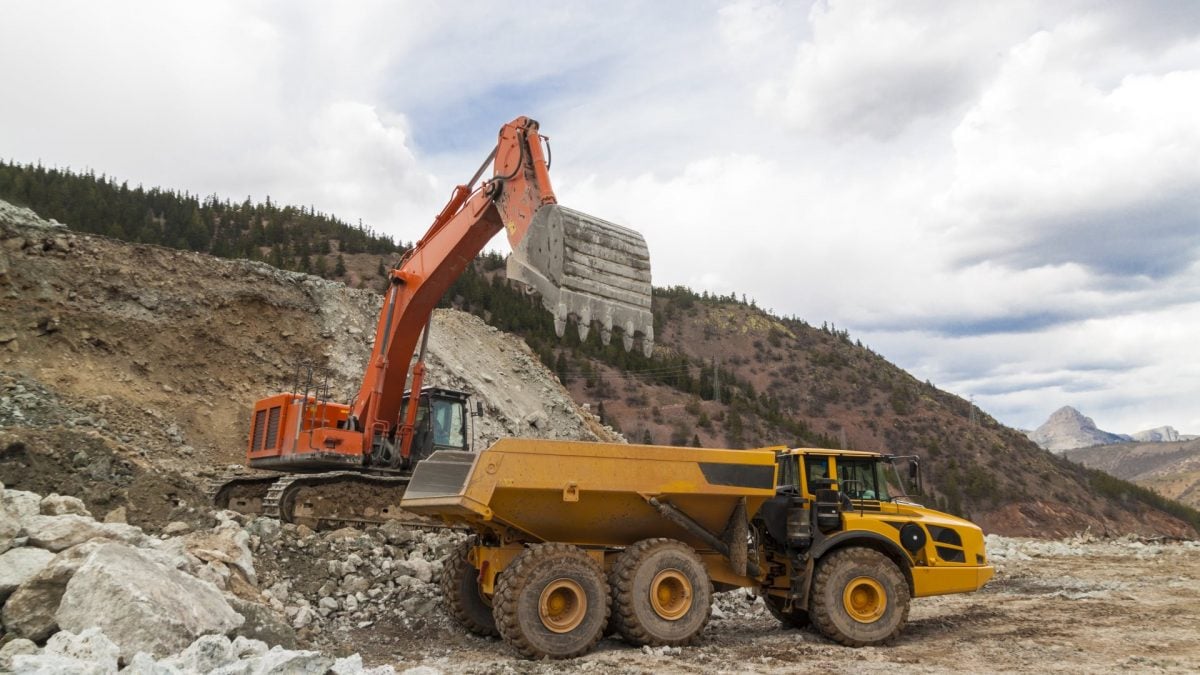
What type of material do you haul? Truckers need to know materials like the back of their hand, and they need to know if their material hauling trucks can handle certain loads. Materials can range from aggregates, asphalt, sand, soil, wet batch, and stone. But what’s the difference between all these, and what is hauling? The main difference of hauling construction materials is loading capacity. For example, truckers with a tri-axle or an end-dump shy from loading too many aggregates in their truck because load capacity is small for these kinds of trucks. Aggregates require space to effectively unload, so a side dump would be perfect. On the other hand, live materials such as wet batch have a smaller loading capacity. They’re unloaded carefully in a controlled environment.
Static Materials: The Building Blocks of Dump Truck Projects
Static materials are easy to load. Haulers who transport static materials don’t spend a lot of time or resources maintaining their trucks. For example, sand is a static material. It keeps a truck relatively clean after it’s unloaded. Trucks like quint-axles with an aluminum body are perfect for these types of materials.
Materials like uncrushed aggregates are considered static “bulk” materials since they require break-down before they can be used. Sand, road base, and concrete aggregate are considered three types of aggregate. Common applications for sand include concrete and asphalt mixing, backfill, water filtration, and snow control. Road base, on the other hand, is used for foundation, highway beams, road stabilization, pipe bedding, driveways, pathways and construction road entrances.
Uncrushed aggregate:
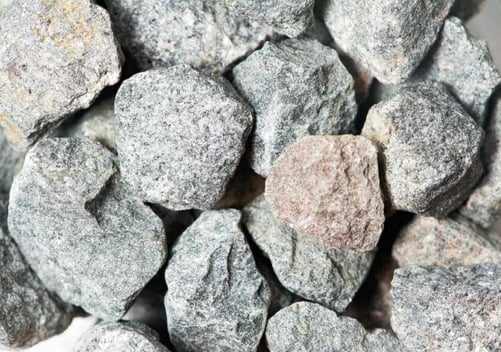
Crushed rock is another type of static material, like landscape rock, that are large grade gravel pieces. It’s found mostly in landscaping projects. Used in erosion prevention, channel flow control, garden landscaping, and pathways, the load capacity of this rock is large. These rocks are sturdy and can withstand tough water leaks. It can also be used for foundation construction, driveways, non-paved roads, flowerbeds, and planters.
Rock crusher:
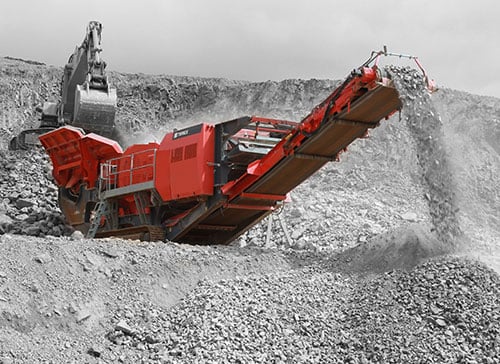
Source: https://www.terex.com/finlay/en/product/jaw-crushers/j-1480
Crushed rock is another type of static material, like landscape rock, that are large grade gravel pieces. It’s found mostly in landscaping projects. Used in erosion prevention, channel flow control, garden landscaping, and pathways, the load capacity of this rock is large. These rocks are sturdy and can withstand tough water leaks. It can also be used for foundation construction, driveways, non-paved roads, flowerbeds, and planters.
Pea gravel:
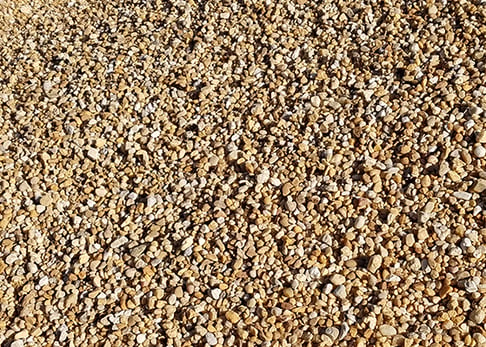
Source: https://www.saundersls.com/products/gravel-stone/pea-gravel/
Live Materials: Take Your Project to the Next Level
Live materials have a life of their own. They’re difficult to control and require a strong skill set to load and deliver. Materials like wet batch require movement and heat to maintain integrity. Often times, they’re made out of a mixture of static materials like aggregates, cementitious binders and water. Their workable area requires liquid tar and a prepared surface before they’re laid down on a foundation and set to dry. The life cycle for these types of materials involves careful planning and execution. Benefits of wet batch include durability, strength, water tightness and abrasion. It’s used to construct highways, bridges, dams, buildings, airports, sewer systems, tunnels, home foundations, driveways, and sidewalks.
Wet batch concrete:
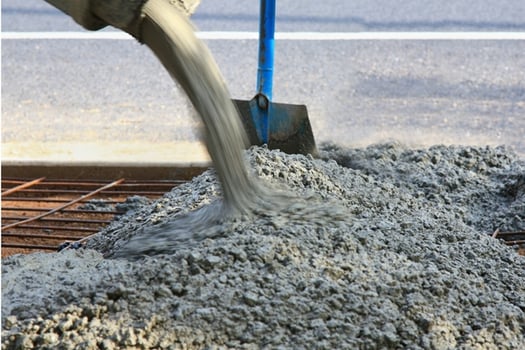
Asphalt is another type of live material consisting of construction aggregates, asphalt binder, additives, and modifiers. Some primary purposes of asphalt involve covering surface areas like roads, parking lots, driveways, walking trails and bike paths. Asphalt is extremely sensitive to weather conditions, so no two tonnages are the same. Gravel like clay is also considered a type of “live material.” It’s wet and can mold between structures to give stability. A common application for pit run gravel, coarse to medium grade clay pieces, includes road construction.
Asphalt:
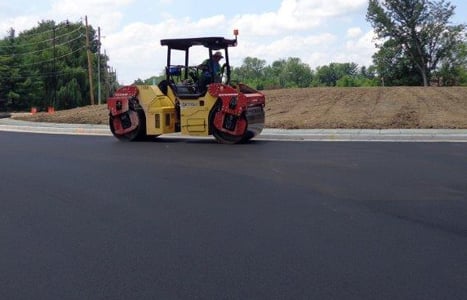
Source: http://www.rieth-riley.com/asphalt-paving.php
For some projects, asphalt requires the help of static materials. Before concrete is laid down on a base, fill sand is laid as a first layer. Truckers can even take asphalt and combine them with other materials. Hot mix asphalt combines asphalt, static material aggregates, and air. The aggregates serve to provide structure, skid resistance, stability, and workability. Warm mix asphalt is more adaptable and costs less. Since it cools more slowly, it can be shipped longer distances and lasts longer. About a third of paving projects like nighttime or winter construction use warm mix asphalt. Cold mix asphalt doesn’t require heat and is the most affordable option. It’s used to repair cracks and potholes. It can’t substitute a formal repair with a hot or warm mix because it’s not as durable.
Putting Material to Work
All of the material outlined in this article have their origins with a material producer and are destined to arrive at some sort of job site. TRUX is allowing material producers, contractors, and haulers to open up the lines of communication to effectively transport all kinds of materials. Companies all across the US are adopting new technology to help them manage their construction businesses. Want more info on how TRUX can help your business with our dump truck logistics platform? We have solutions for hauling construction materials, dump truck owners, contractors, and material producers.
Related Posts
How Dispatching Software Enhances Logistics and Material Hauling
In today’s competitive construction industry, efficiency in logistics can make or break your...
How Increased Hauling Material & Digital Tools Can Drive Profit
Name one thing that you think would most certainly impact your profits in a positive way. Is it to...
What Producers Can Do To Increase Construction Material Hauling
The first thing material producers can do to increase their material hauling is to adopt a mindset...

